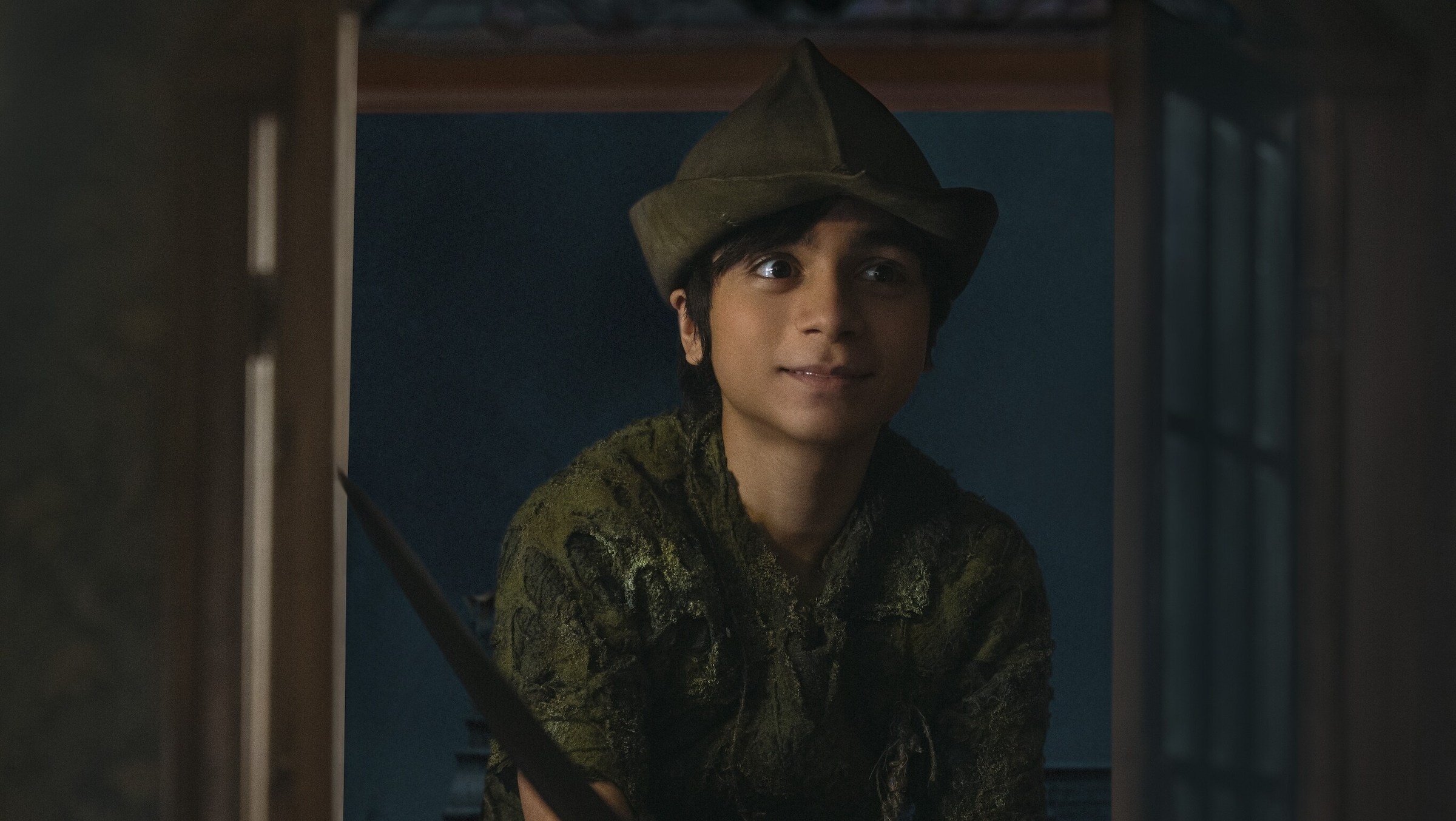
The live-action remakes of classic Walt Disney animation seem to invite mostly skepticism if not outright derision, but some of them have been delightful: Kenneth Branagh’s Cinderella had a sumptuous swagger, and Bill Condon’s Beauty and the Beast was less a striving-to-be-faithful remake than a tribute to go-for-broke musicals of the 1960s like Oliver! These remakes are best in the hands of inventive directors who are allowed to run free with them, reinventing the original material in ways that feel both fresh and respectful.
David Lowery, a director with a gift for rich, evocative visuals, has already given us one of those live-action remakes with 2016’s Pete’s Dragon, and he’s now gotten a crack at a second, Peter Pan & Wendy, a reworking of Disney’s 1953 Technicolor flight of fancy Peter Pan. Perhaps there’s just no getting around the weirdness of Scottish playwright and novelist J.M. Barrie’s initial conceit, first explored in a 1904 stage play: A boy-sprite who refuses to grow up makes it all seem normal by orchestrating the companionship of other lost kids. But they still need a mother, so he tries to persuade a compliant preteen girl to accept the role. Maybe the best approach would be to just lean into the story’s sterling-and-carved-oak Edwardian strangeness. But Lowery instead tries to retrofit Barrie’s vision to fit modern sensibilities, and the result is both a stretch and a slog. If you don’t count the end credits, Peter Pan & Wendy clocks in at a reasonable runtime of a little over 95 minutes. So why does it feel interminable?

This retooled Peter Pan begins with adolescent Wendy Darling (Ever Anderson) sulking over the fact that she’s about to be sent off to boarding school; this is the last night she’ll spend at home with her rambunctious younger brothers (played by Joshua Pickering and Jacobi Jupe) and her parents (Alan Tudyk and Molly Parker—though Parker gets only a few minutes of screentime, she gives the film a flush of warmth whenever she appears). Once everyone is asleep, a strange little winged creature—Yara Shahidi’s Tinker Bell—sprinkles Wendy with sparkly dust that will allow her to fly. A little later, an ominously puckish figure appears at the window: It’s Peter, Peter Pan—the James, James Bond of kidlet literature—played by Alexander Molony. His shadow has detached itself from his body; Wendy, adept at the womanly arts, sews it back on, unknowingly earning Peter’s devotion—or as much devotion as he can muster for a mere mortal girl. All three of the young Darlings get sprinkled with Tinker Bell’s fairy dust and fly off to Neverland, which they know from the stories their mother has told them. But they’re still not prepared for the villainy of Captain Hook, who, as played by Jude Law, is almost alarmingly sexy, his grungy pirate teeth and dirty fingernails notwithstanding.
Read More: The Racist History of Peter Pan
Forget Barrie’s original material; there’s plenty in Disney’s 1953 version that requires heavy-duty revision, or even just gentle tweaking, before it can be put before a scrutinizing modern audience. The cartoonish Indian princess Tiger Lily is now a sensitive, noble warrior who speaks words of wisdom but can also fight like hell. (She’s played by Alyssa Wapanatâhk.) Peter’s gang of “lost boys” are now a multiracial mix of boys and girls. Wendy expresses outright ambivalence at the idea of being a mother to anyone, preferring to show off her swordplay skills. Molony’s Peter is all the things he needs to be—mischievous, defiant, at times unnervingly solemn—without being the boringly stereotypical freckled-faced white kid from down the block. And Lowery downplays the scary crocodile, Captain Hook’s four-legged nemesis. None of those changes are bad; in fact, they’re smart. But they still require Lowery to turn himself into pretzel shapes to accommodate so many characters: he’s got to ensure everyone gets a suitable-for-2023 role, and make sure we all notice.

The movie’s production design, by Jade Healy, is rather handsome, especially in the early scenes set in the Darlings’ London home: at one point an overhead camera swirl reveals a doll’s house–like view of walls clad in William Morris florals and Persian carpets dotted with recently played-with toys. If only the characters were as memorable. Barrie’s original lost boys are now creepy children in tattered clothes who, as they scrutinize Wendy to see if she’s mother material, whisper off-screen, “She’s too old!” as if they were seeking to turn her into a human sacrifice—which, in effect, they are. Lowery hasn’t totally done away with the source material’s vaguely sinister undertones: Peter still has an almost messianic hold on all his little rug-rat followers. But by the time Peter Pan & Wendy trundles into its final moments, and one character or another has loudly proclaimed for the millionth time that they never want to grow up, you may have had enough. This movie makes being young look like the opposite of fun, a spell you’ve got to break out of. Maybe that’s the ultimate revelation of the story of Peter Pan—but it shouldn’t be drudgery to get there.
More Must-Reads from TIME
- Cybersecurity Experts Are Sounding the Alarm on DOGE
- Meet the 2025 Women of the Year
- The Harsh Truth About Disability Inclusion
- Why Do More Young Adults Have Cancer?
- Colman Domingo Leads With Radical Love
- How to Get Better at Doing Things Alone
- Michelle Zauner Stares Down the Darkness
Contact us at letters@time.com